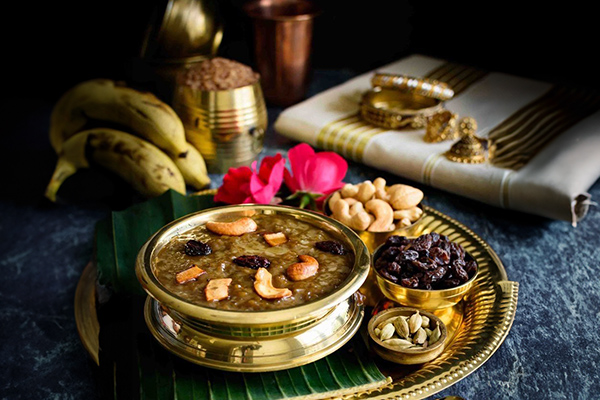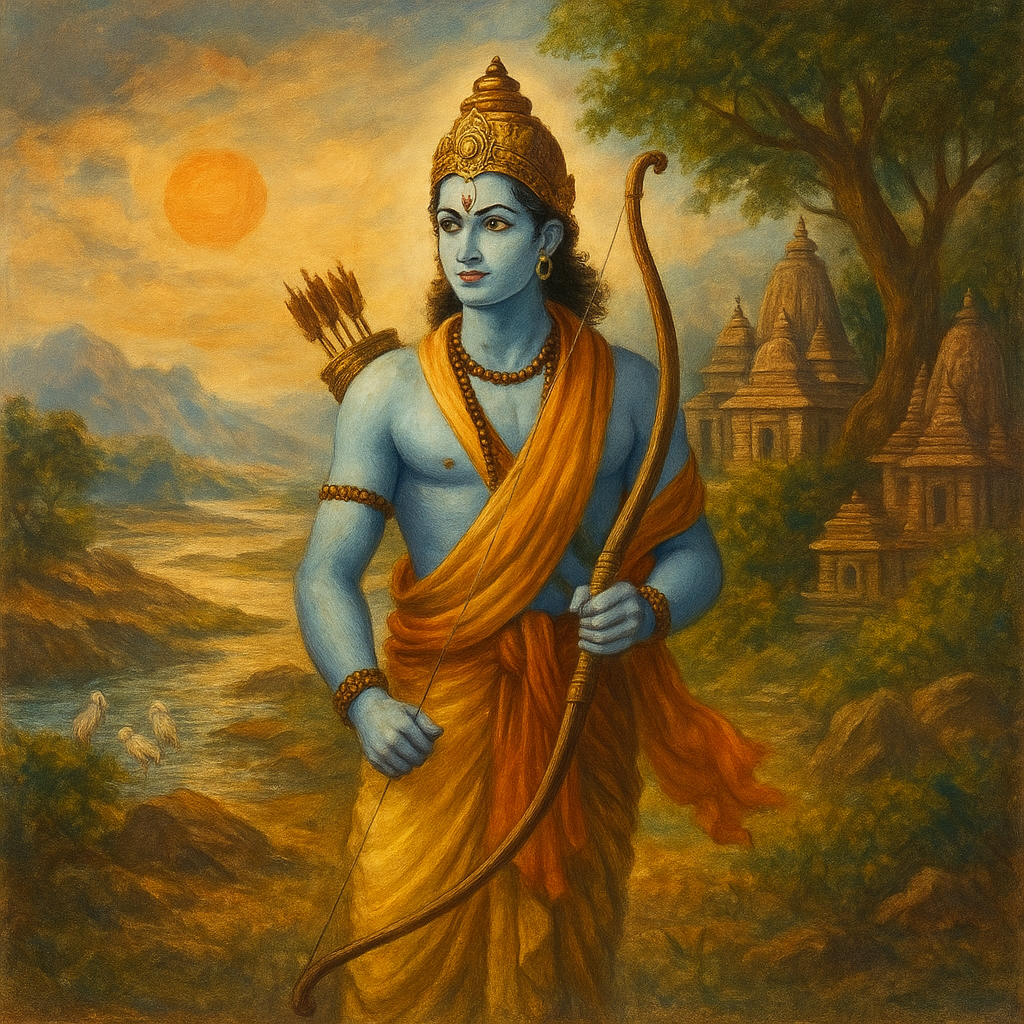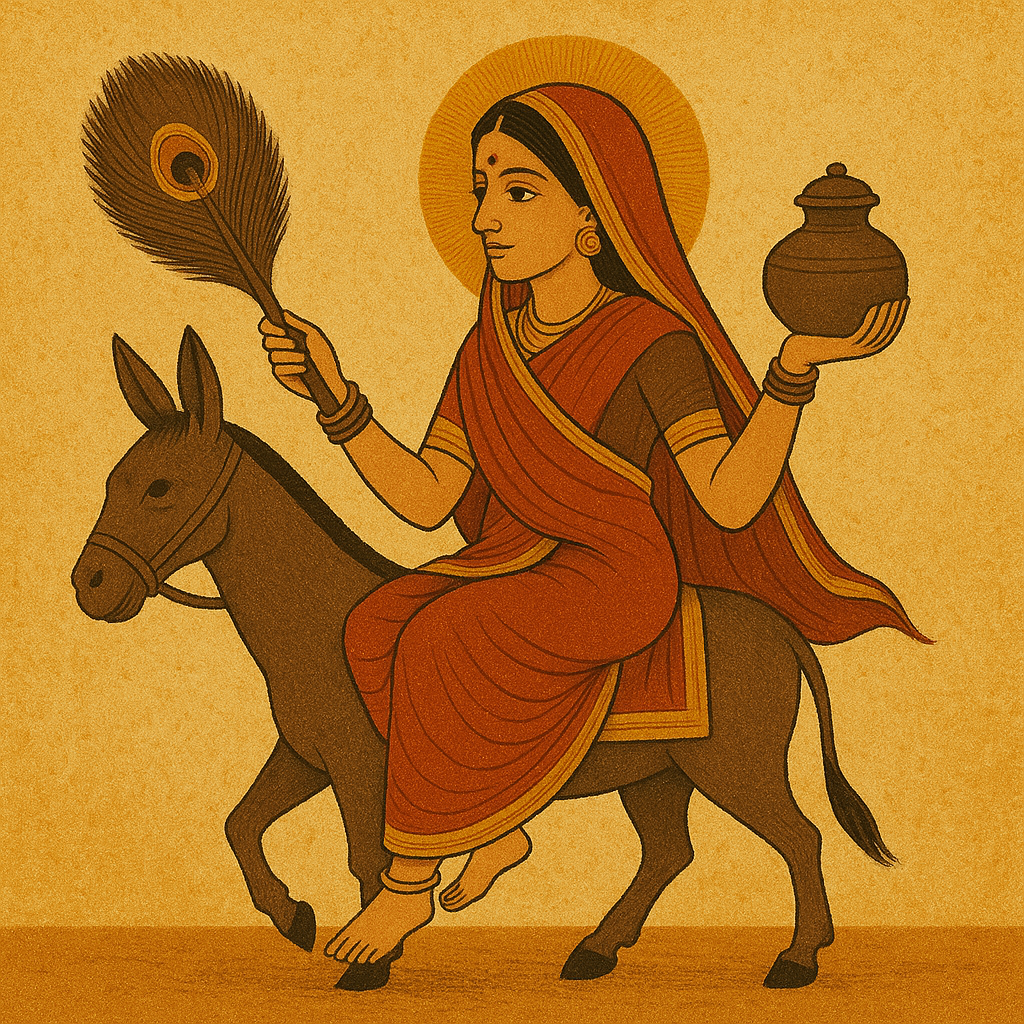
Puthandu marks the beginning of the Tamil New Year, celebrated on the first day of the Tamil month Chithirai (Chitterai), which falls on
Monday, April 14th
. This joyous occasion is widely observed by Tamilians across India, as well as in Sri Lanka, Malaysia, and Singapore. The festival is a vibrant celebration of new beginnings, filled with joy and enthusiasm.
In Tamil Nadu, Puthandu is also known by other names such as Puthuvarudam or Varsha Pirappu, depending on the region. On this day, people greet each other with the festive wish, “Puthandu Nalvazthukal,” meaning “Happy New Year” in Tamil. Though it is primarily celebrated as the Tamil New Year, the festival corresponds to similar events across India, such as
Pohela Sankranti in Odisha
,
Vishu in Kerala
,
Bihu in Assam
, and
Baisakhi in central and northern India
.
Puthandu has been declared a state holiday in Tamil Nadu, and as such, all offices, educational institutions, and banks remain closed to honor this occasion.
Festival Date, Time & Muhurat
Puthandu will be observed on
Tuesday, April 14, 2026
First day of the Tamil month Chithirai as per the Tamil solar calendar.
Key Timings for Puthandu 2026:
Tamil Shaka Samvata 1948 Begins
Sankranti Moment on Puthandu - 09:39 AM
Note: Sunrise and sunset vary by region and date due to India's geographical diversity. For exact timings, refer to local astronomical data.
Significance & Importance of Puthandu Festival

Apart from being a celebration of new beginnings and the fulfillment of wishes, Puthandu holds deep spiritual significance for Tamilians, entwined with rich mythological narratives. According to legend, this day marks the descent of Bhagwan Indra, the God of Rain and Thunder, to bless the Earth with prosperity, good harvests, and peace. As the divine ruler of the skies, Indra’s arrival symbolizes the showering of divine grace upon humanity, ensuring abundance in both material and spiritual realms.
In some regions of Tamil Nadu, Puthandu is believed to be the day when Bhagwan Brahma, the Creator of the Universe, conceived the cosmos. It is said that on this auspicious day, Brahma initiated the creation of the world, bringing forth the cycle of life, growth, and renewal. This connection to cosmic creation imbues the festival with a profound sense of divine order, reminding devotees of their spiritual journey and the importance of righteousness in their daily lives.
On Puthandu, Tamilians engage in acts of worship and devotion, seeking divine blessings for the year ahead. Many families begin the day by offering prayers to Bhagwan Ganesha, the remover of obstacles, and Bhagwan Vishnu, the preserver of the universe, to ensure a smooth and prosperous year. The symbolic first sight of the year, often viewed by looking at auspicious items like fruits, flowers, and new clothes, is believed to bring blessings of wealth and success.
Thus, Tamil Puthandu is a time for spiritual reflection and devotion, reinforcing the connection between the divine and the earthly realms, and serving as a reminder of the eternal cycles of life, renewal, and cosmic balance.
Story of Puthandu Festival

According to Tamil mythology, it is believed that on this day, Bhagwan Brahma, the Creator of the Universe, began his work of creating the world and the beings that inhabit it. The day signifies a cosmic renewal, a new cycle of life, growth, and prosperity, as Bhagwan Brahma set the universe in motion, bringing forth the cycles of time and the unfolding of creation.
This spiritual event is marked by the first day of the Tamil month of Chithirai, which coincides with the Sun’s transition into Mesha Rashi (Aries), making it a day of cosmic significance and alignment. The day is thought to symbolize not just the beginning of a new year but also the birth of the universe itself, making it a sacred occasion for Tamilians.
In this mythological context, Puthandu is regarded as the perfect time to reflect on the past, seek forgiveness, and set new intentions for the coming year. It is a day of hope and renewal, where devotees come together to celebrate creation and express gratitude for the gift of life. The festival serves as a reminder of the divine order and harmony that governs the universe, encouraging people to align their lives with righteousness, peace, and prosperity.
This story forms the spiritual backbone of Puthandu, making it not only a celebration of the Tamil New Year but also a time to reconnect with cosmic truths and blessings, while honoring the eternal process of creation and renewal that Bhagwan Brahma began on this sacred day.
How to celebrate Puthandu Festival

Puthandu celebrations hold great significance in Tamil culture, bringing together people from all walks of life to celebrate unity, tradition, and the spirit of renewal.
The day is marked by the joyous participation of communities in folk dances such as Kummi and Kolattam, which are vibrant expressions of Tamil culture. These dances are often performed by women, accompanied by traditional songs, creating a lively atmosphere that binds families and friends.
The festival also sees the exchange of gifts, greetings, and blessings, as people seek to strengthen familial and social bonds. One of the most significant traditions of the day is the reverence shown to elders, with children and younger people touching their feet to seek their blessings for a prosperous year.
On Puthandu, everyone, from children to elders, dons traditional attire to embrace the cultural essence of the festival. Men wear lungis and angavastams, while young girls shine in their colorful pavadai dhavani, and women grace the occasion in Kancheepuram sarees paired with ethnic jewelry. This communal dressing not only signifies respect for the occasion but also promotes a sense of unity and pride in Tamil heritage.
Homes are thoroughly cleaned and beautifully decorated with fresh flowers and intricate Kolam (rangoli) designs, creating an inviting atmosphere. Guests are warmly welcomed into homes where festive dishes are served, symbolizing abundance and hospitality.
In several regions such as Madurai, Tirunelveli, and Tiruchirappalli, the celebrations take on an even more cultural form with performances of Oyilattam, a traditional dance-drama that narrates tales from the Puranas. These performances, especially those focused on
Bhagwan Muruga
, are a powerful way to preserve ancient stories and legends, passing them on to the next generation.
The mesmerizing rhythm and graceful movements of these dance-dramas add depth to the celebrations, making Puthandu not just a festival of food and attire, but a true cultural revival that honors Tamil traditions, rituals, and deities.
Puthandu Festival Traditional Food

Just like any other festival, Puthandu is no exception when it comes to food. The authentic Puthandu spread comprises lip-smacking delicacies ranging in flavor from sweet to sour and spicy to bitter. The menu features an eclectic selection of dishes, the must-haves being mangai pachadi, a sweet and sour mango preparation, and veppanbu pachadi, a bittersweet concoction of neem, tamarind, jaggery, and mangoes. Apart from the essentials, other popular servings include the Kosambari salad prepared with split greengram (moong dal), vadas filled with stuffings and deep-fried into crunchy bites, and payasam, which is a sort of a dip made of milk, lentils, and a sweet dish prepared from split Chickpeas, jaggery, and coconut ensconced in flour-enveloped. Some more go-to favorites from the Puthandu food culture include Sakkarai Pongal (a sweet porridge made of rice, yellow moong dal, and jaggery), Avial (a high-calorie dish prepared with vegetables in coconut sauce and curry leaves), Cabbage poriyal (sautéed and steamed cabbage cooled in a spicy gravy), Vazhakkai curry (a special festive dish made of raw bananas cooked in a coconut-based masala), Veppam poo rasam (an appetizing soup made from dried neem leaves stirred in rasam), Manga oorugai (fresh raw mangoes pickled in sesame oil and flavored with mustard seeds), Panagam (jaggery water with cardamom powder), and Curd.
The Custom of Kanni

During the festival, many Tamilians practice the Kanni custom. On the eve of Puthandu, a large platter is prepared with an eclectic mix of goods ranging from mango, banana, betel leaves, jackfruit, jewelry, and cash. The kanni is strategically placed to be the first thing patrons see on festival morning. This custom is thought to bring peace, harmony, and prosperity to the household.
This tradition dates back to ancient times and is a tribute to a predominantly agrarian culture. A kanni reflection in the mirror is considered auspicious at the festival's start. Following that, the household performs other rituals such as showering, putting on new clothes, and praying.
Finally, the family gathers for a feast featuring a variety of South Indian dishes specially prepared for the event!
Puthandu Festival Puja Vidhi (Puja Procedure)

Begin the celebration early in the morning, ideally before sunrise. Take a ritual bath to purify yourself, as it is believed that cleanliness of the body and mind is essential for the success of the puja. Wear new clothes, as this symbolizes a fresh start for the new year. Clean and decorate the home with flowers and Kolam (rangoli) designs to invite positive energy. Set up an altar or a clean space to perform the puja.
Setting Up the Altar:
Place an idol or picture of Bhagwan Ganesha (the remover of obstacles), Bhagwan Vishnu (the preserver), and Bhagwan Brahma (the creator) on the altar. These deities are worshiped during Puthandu for blessings of prosperity, good health, and happiness in the coming year. Along with the idols, place fruits, flowers, and sweets like Puran Poli or Mango Pachadi as offerings. Keep a lamp or diya ready to light during the puja.
First Sight of the Year:
One of the key rituals on Puthandu is the first sight of the year. As soon as you wake up, it is customary to look at an auspicious item like a tray filled with new clothes, gold, silver, fruits, and flowers. This first sight is believed to bring blessings and ensure good fortune for the entire year. This ritual is done with prayers in the heart, asking for divine protection and prosperity.
Offering Prayers and Lighting the Lamp:
Sit before the altar, light the lamp (diya), and offer prayers to the deities. Start with Ganapati Vandana to invoke Bhagwan Ganesha's blessings for removing obstacles. Then, chant prayers to Bhagwan Vishnu and Bhagwan Brahma, thanking them for the previous year and asking for their blessings in the new year. You may also recite the Gayatri Mantra or Puthandu prayers specific to your family or region.
Pooja Rituals and Offering Prasad:
During the puja, offer fruits, flowers, and sweets to the deities. After the prayers, offer the prasad (food offerings) to the family members. It is customary to prepare special dishes like Puthuvarudam, Mango Pachadi, and Kootu for the occasion. Share these offerings with family members and guests, symbolizing the joy and abundance of the new year.
Ending the Puja and Prayers for the Year Ahead:
Conclude the puja by offering gratitude for the divine blessings received. Ask for peace, prosperity, and good health for yourself and your loved ones. Perform Aarti with a bell or cymbals while chanting the name of the deities, thanking them for their presence.
After the puja, engage in acts of charity, such as donating food, clothes, or money to the needy, as this enhance the blessings received during the festival.
Puthandu Festival Puja Mantras
Key mantras recited during Puthandu (Tamil New Year) celebrations:
Ganapati Vandana
This mantra is recited at the start of the puja to seek Bhagwan Ganesha’s blessings for removing obstacles and ensuring a smooth year ahead.
ॐ गं गणपतये नमः
Om Ganapataye Namah
(Translation: I bow to Bhagwan Ganesha, the remover of obstacles.)
Surya Mantra (Invocation to the Sun God)
The Sun God is worshiped on Puthandu for good health and prosperity.
ॐ सूर्याय नमः
Om Suryaya Namah
(Translation: I bow to Bhagwan Surya, the Sun God.)
Gayatri Mantra
This universal mantra is recited for spiritual purification and invoking blessings for a prosperous year.
ॐ भूर् भुवः स्वः।
तत्सवितुर्वरेण्यम्।
भर्गो देवस्य धीमहि।
धियो योनः प्रचोदयात्।
Om Bhur Bhuvah Swaha,
Tat Savitur Varenyam,
Bhargo Devasya Dhimahi,
Dhiyo Yonah Prachodayat.
(Translation: We meditate upon the divine light of the Sun, which enlightens our intellect and leads us towards the path of righteousness.)
Puthandu Prayers
This is a prayer specifically for Puthandu (Tamil New Year), seeking divine blessings for a prosperous and peaceful year.
मधुरं मङ्गलं मङ्गलं
आनन्दं नववर्षोऽयं
सर्वकान्तार्धकारिणि।
Madhuram Mangalam Mangalam
Anandam Navavarsyo’ Yam
Sarvakanthardhakaarini
(Translation: May this new year be sweet, auspicious, and filled with joy, bringing peace and prosperity to all.)
Puthandu Festival Vrat Vidhi (Fasting Procedure)
On Puthandu, the Tamil New Year, observing a fast is considered an important part of the spiritual celebrations. The fast typically begins early in the morning, after a ritual bath to purify both the body and mind. It is customary to wear new clothes as a symbol of renewal and the start of a new year.
Many people opt for a partial fast on this day, consuming only fruits, milk, and nuts throughout the day. For those observing a full fast, abstaining from food and water is common. It is believed that this fast helps cleanse the body and soul, ensuring a year filled with peace, prosperity, and divine blessings. Throughout the day, devotees spend their time in prayer, meditation, and reflection, focusing on spiritual growth and connecting with the divine.
The fast is usually broken after the Punya Kaal Muhurat, which occurs after sunrise. At this time, it is customary to offer prayers to Bhagwan Ganesha, Bhagwan Vishnu, and Bhagwan Brahma.
After the prayers, devotees traditionally break their fast with a simple, sattvic meal, which often includes Puthuvarudam (a dish prepared for the occasion), fruits, and sweets like Mango Pachadi.
Many also engage in acts of charity by donating food, clothes, or money to the less fortunate. It is believed that by doing so, one receives divine blessings and their positive karma is multiplied. The day concludes with gratitude towards the divine, seeking blessings for a prosperous year ahead.
Puthandu Festival Vrat Katha (Traditional Fasting Story)

The Puthandu Vrat Katha is deeply rooted in the ancient spiritual traditions of Tamil Nadu and is intertwined with the mythological tale of the cosmic creation. The story begins with Bhagwan Brahma, the Creator of the Universe, who, on this sacred day, began the monumental task of shaping the cosmos. It is believed that on Puthandu, the first day of the Tamil month Chithirai, Bhagwan Brahma brought the universe into existence, laying down the foundations of time and creation. The Earth, the sky, the stars, and all living beings emerged from his divine will, bringing balance and harmony to the universe. The day symbolized a new beginning, a fresh cycle of creation, where the forces of nature were in perfect alignment to nurture life.
As the universe was being formed, the divine energies of Bhagwan Vishnu, the Preserver, and Bhagwan Shiva, the Transformer, played their part in ensuring the preservation and transformation of the newly created world. The heavens, recognizing the sacredness of this cosmic event, sent Bhagwan Indra, the King of the Gods, to bless the Earth with his divine rain and thunder, ensuring that the newly created world would flourish with abundant harvests. It was on this day that the seeds of life were sown, and the Earth, bathed in divine light, began its journey of growth and evolution. The rains bestowed by Bhagwan Indra symbolized the fertility of the land, bringing prosperity to the people.
In reverence to the divine acts of creation, the people of Tamil Nadu, along with other regions, began to celebrate Puthandu with great fervor. The fast observed on this day became a powerful symbol of spiritual purification and renewal. Devotees believed that by fasting and engaging in prayers, they could cleanse their bodies and minds, aligning themselves with the cosmic rhythms of creation. The fast not only symbolized physical purification but also an inner rebirth, inviting the blessings of the deities for a prosperous and harmonious year ahead. The rituals of the day, filled with prayers, offerings, and devotion, were a way to honor the divine forces that shaped the universe and to seek their protection and blessings for the future.
As time passed, the Puthandu Vrat became more than just a day of fasting—it became a celebration of life itself. The story of the cosmic creation and the divine blessings associated with it inspired people to seek renewal, peace, and prosperity. The rituals, steeped in mythology, are a way of connecting with the divine, ensuring that each year begins with the purity and sacredness that marked the birth of the universe. The fast, the prayers, and the devotion continue to serve as a reminder of the eternal cycle of creation, preservation, and transformation that governs all existence.
By observing the Puthandu Vrat, people not only honor the cosmic order but also renew their spirits, ushering in a new year filled with hope, divine blessings, and the promise of new beginnings.
Puja Utensils, Essentials
Rudra Centre brings an extensive collection of Puja Articles which caters to all that is required for daily and special Puja Vidhis. We offer variants of designs and sizes in each category. The list includes handcrafted Puja Mandirs, Puja Pedestals, offering Bowls, Panchpatra, intricately carved Puja Thalis, Abhishek Vessels, in different materials, Pure Silver/German Silver articles like Kalash, set of Shodash Upachara and Several other Puja Articles, which we deliver at your doorstep.
Visit the complete collection:
Conclusion
Puthandu is not only a celebration of the Tamil New Year but also a spiritual event that marks the cosmic renewal of life. Rooted in mythological significance, it honors the divine forces that shaped the universe and continues to be a time for purification, reflection, and devotion. The fasting, prayers, and rituals performed during this festival are a way for devotees to align themselves with the celestial forces and seek blessings for a prosperous and harmonious year. It is a celebration of the interconnectedness of life, a time to embrace renewal and growth, and to share joy and gratitude with family, friends, and the community. With its rich cultural heritage and deep spiritual roots, Puthandu serves as a reminder of the ongoing cycle of creation and the divine presence that guides the world toward peace and prosperity.


-in-Astrology.jpg)






.jpg)



Comments 0
Leave your thought here